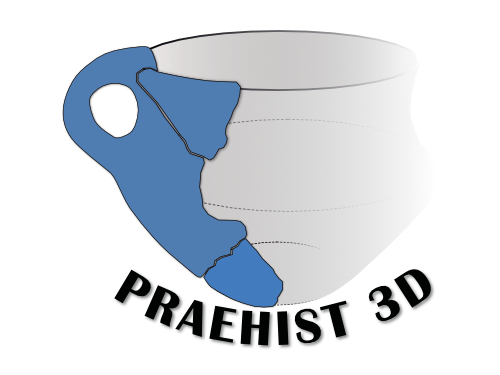Knochen als Spurenträger
Eines der Hauptarchive zum Leben der Menschen und ihrer Ernährung stellen Knochen von verspeisten Tieren dar. Sie sind ideale Informationsträger, da sie sich in vielen Böden gut erhalten, in riesigen Mengen angefallen sind und sie zum quasi täglichen Leben gehörten. Spezialisierte Archäozoologen sind im Umgang mit Knochen aus archäologischen Fundkomplexen geschult und können eine Vielzahl von Schlussfolgerungen aus ihnen ziehen. Wenn eine ausreichend große Stichprobe gegeben ist, können so nicht nur Rückschlüsse auf die Ernährung innerhalb der Siedlung gezogen werden, sondern ebenso auf den Faunen Bestand in der sie umgebenden Landschaft.
Da ich kein Archäozoologie bin, kann ich leider nur in geringem Maße versuchen, Rückschlüsse aus den mir vorliegenden Knochen zu ziehen. Wenn ich also irgendwo komplett danebenliege, würde ich mich über Kritik und Anmerkungen sehr freuen.
Das Modell
Das hier besprochene Modell wurde aus 55 Einzelbildern erstellt. Es verfügt über eine Auflösung von 2,5 mio. Polygonen und eine Textur mit 16.000 Pixeln Breite. Durch die feingemusterte original Oberfläche ließen sich die Bilder gut aneinander ausrichten und ergaben eine sehr dichte Punktwolke.
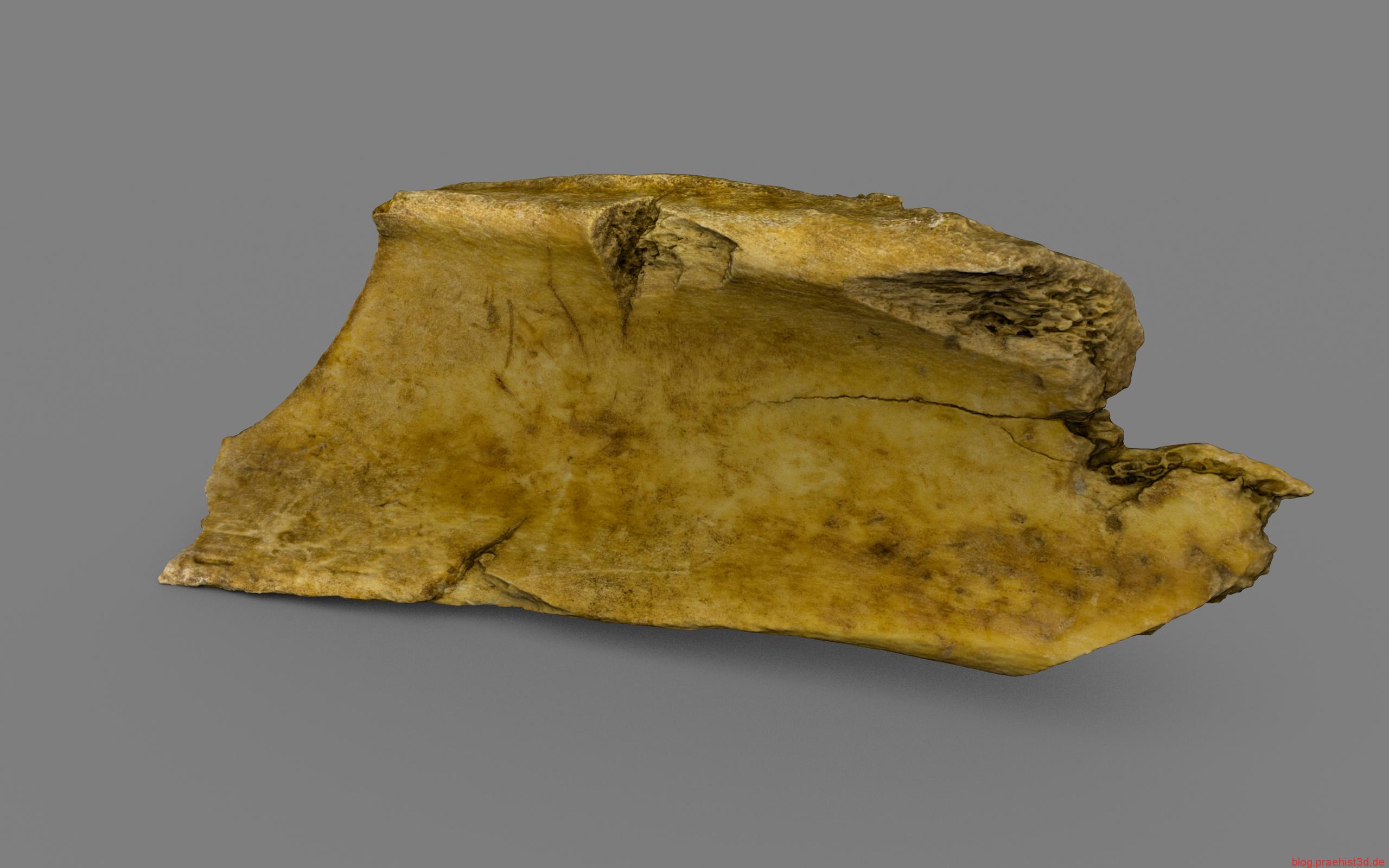
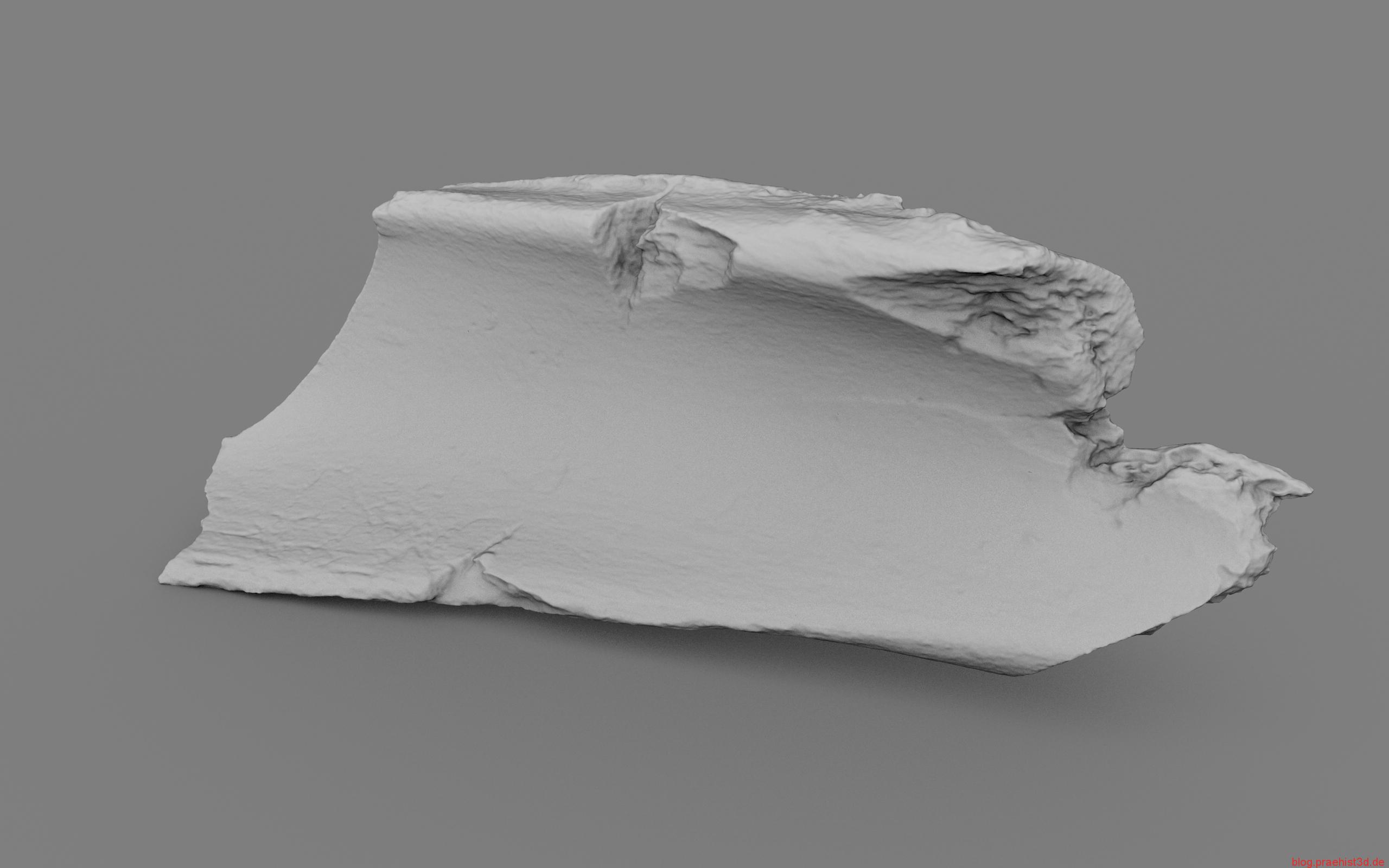
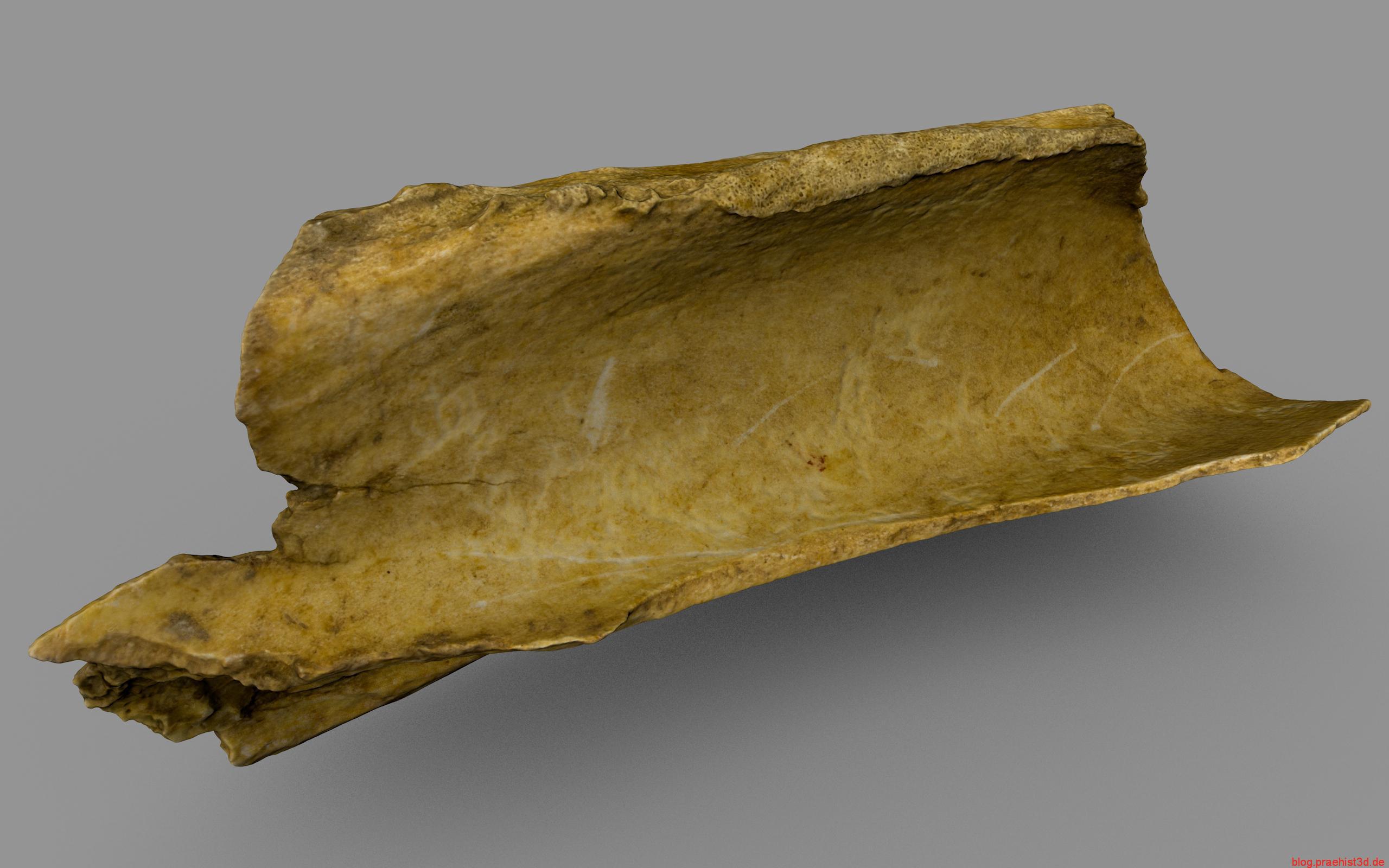
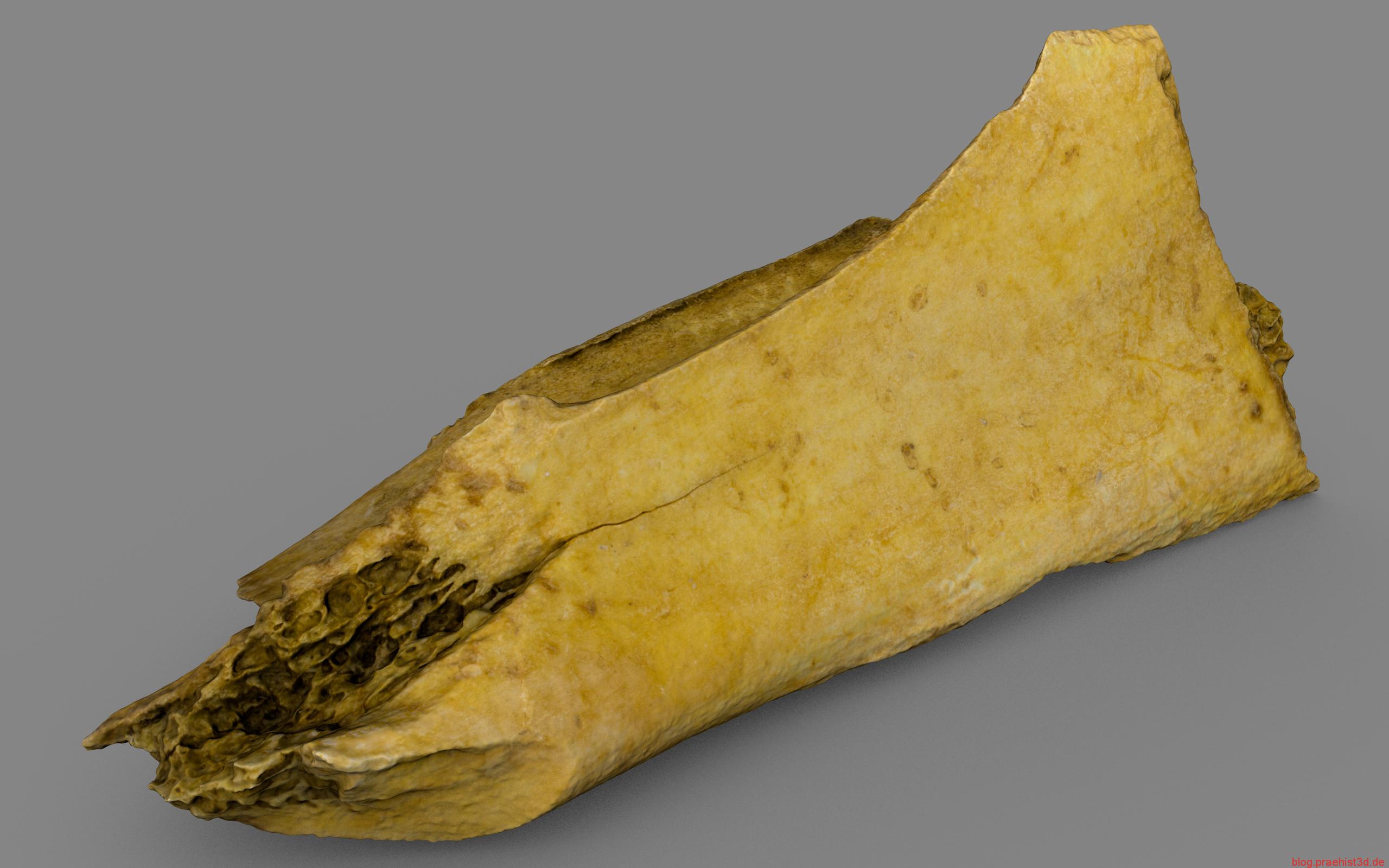
Sicherlich ist es zu umständlich, für normalen Schlachtabfall jeweils 3D Modelle zu erstellen. Es soll hier nur einmal ausprobiert werden, welche Analysen möglich sind und was für Informationen gewonnen werden könnten.
Schnitt und Hackspuren
Direkt am Modell lassen sich auch hervorragend die Schnitt- und Hackspuren der Fleischer vor 1500 Jahren nachvollziehen. Ich habe zur besseren Sichtbarkeit hier einmal texturierte und untexturierte Renderbilder gegenübergestellt.
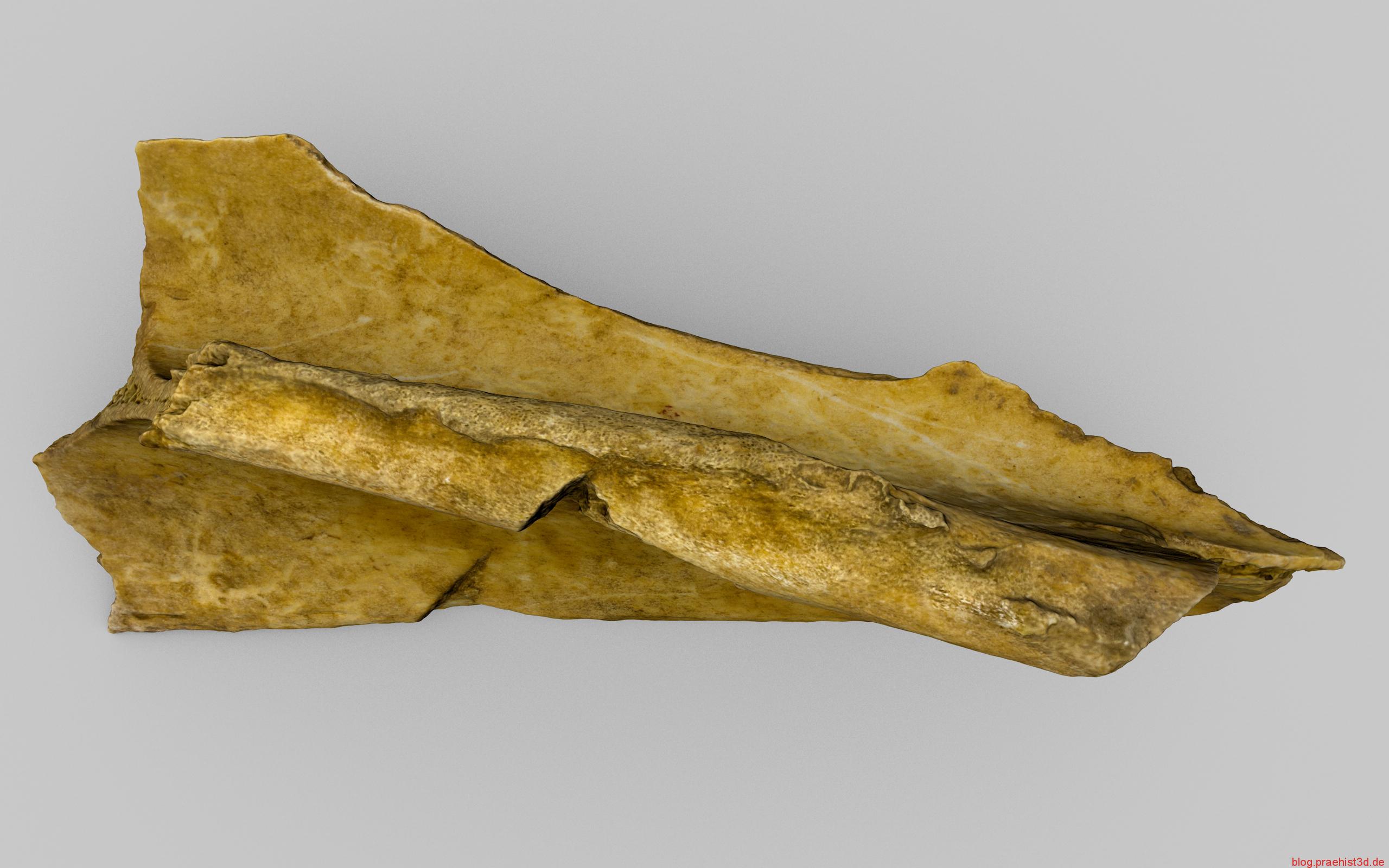
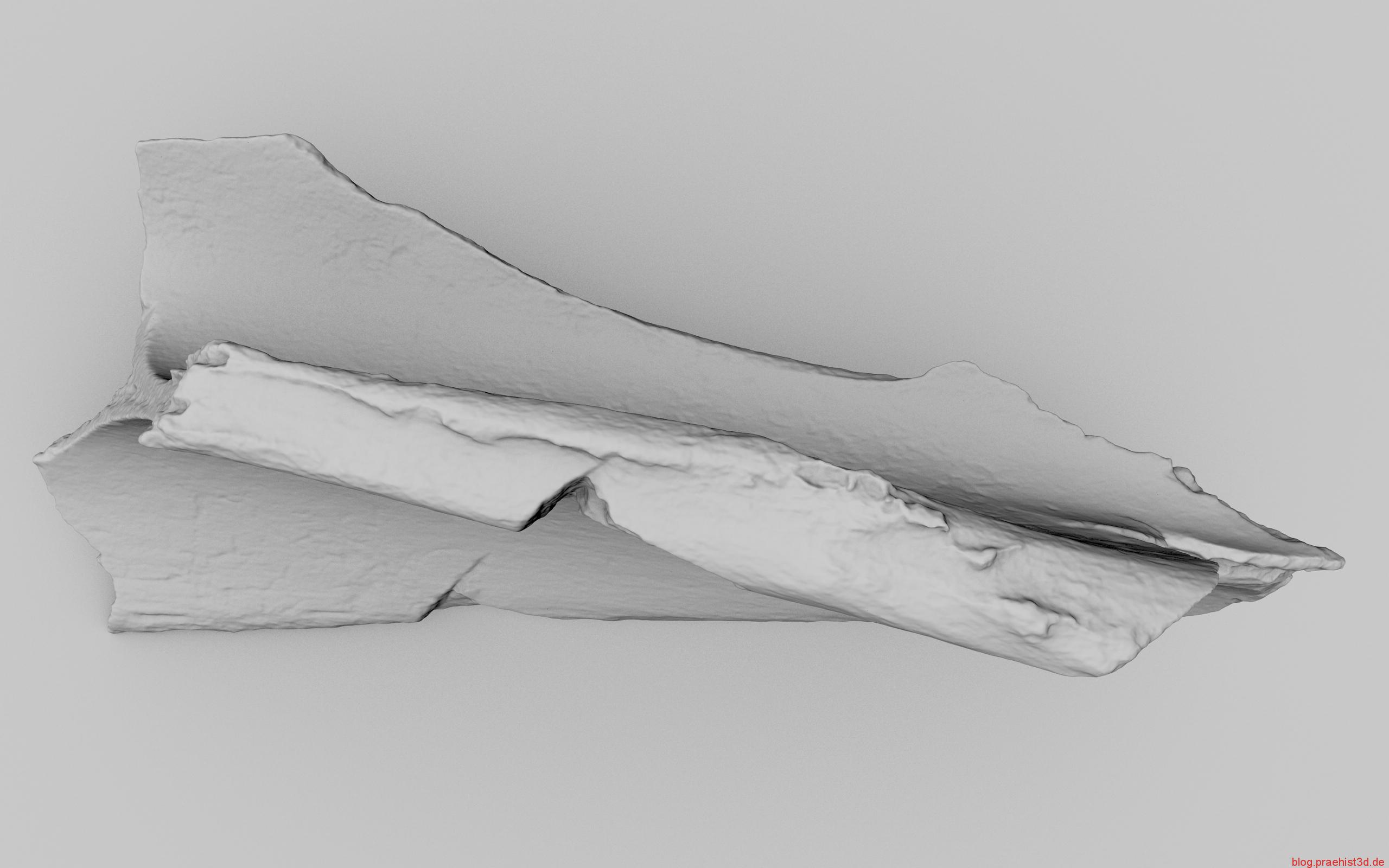
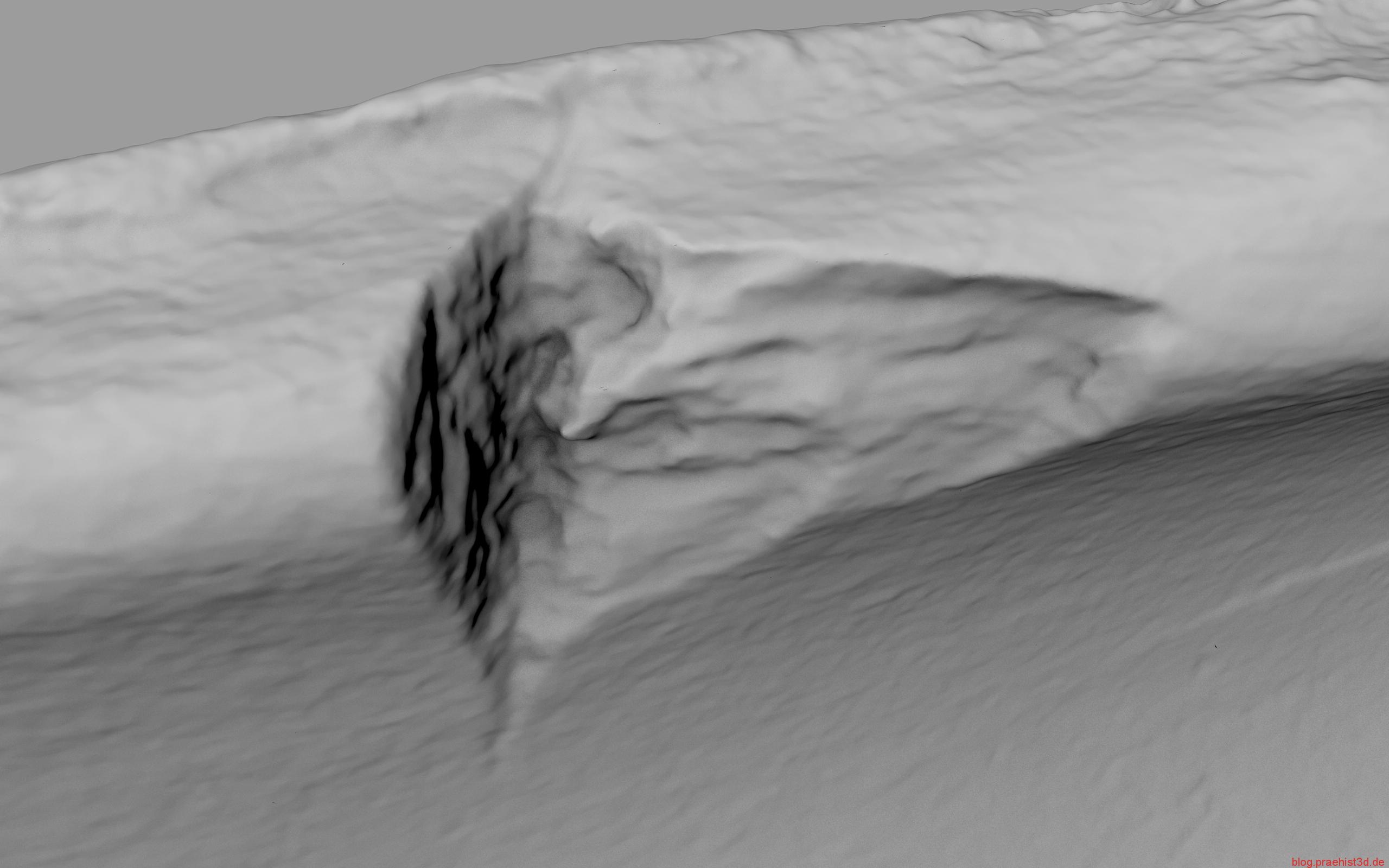
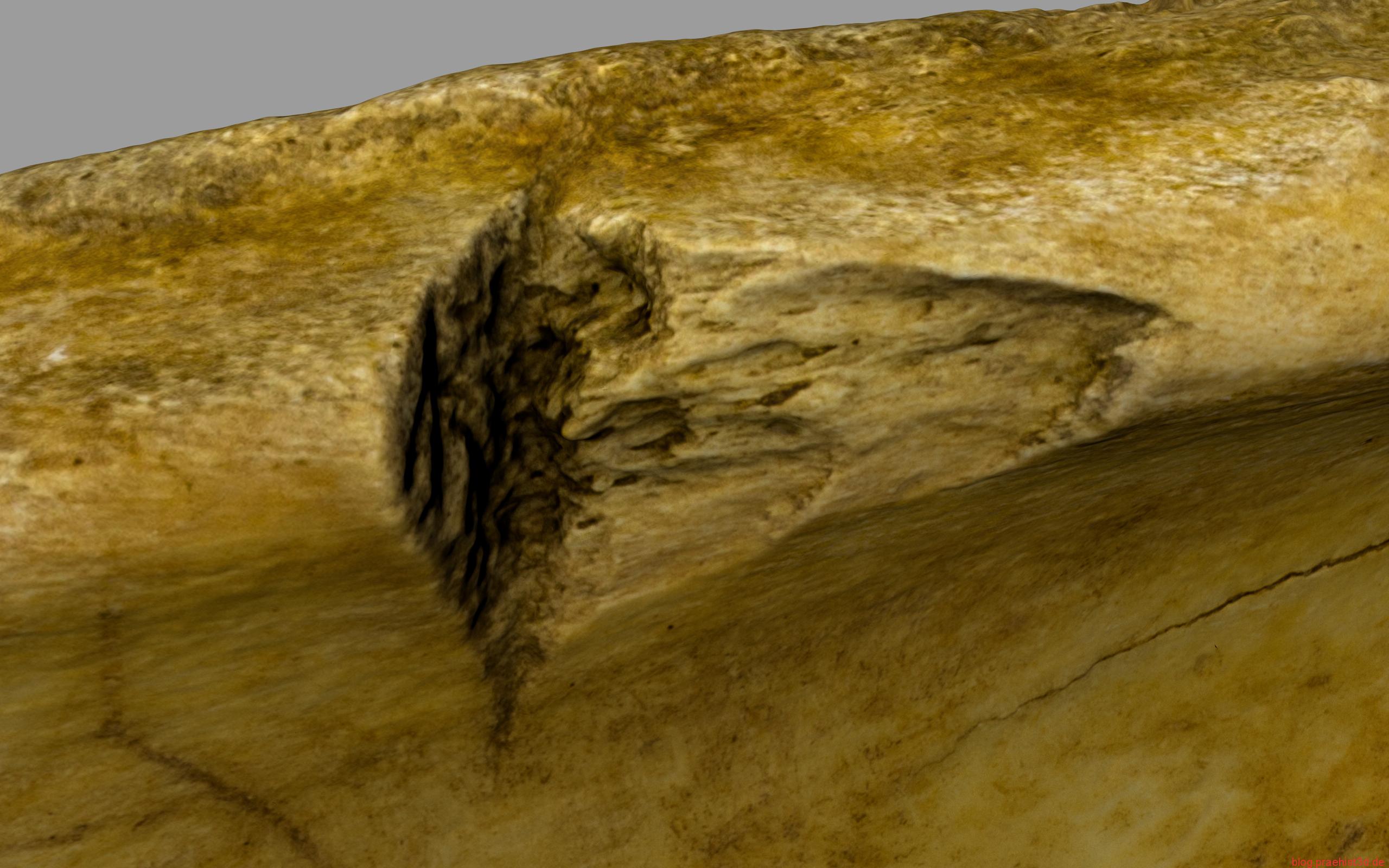
Auffallend ist vor allem der quer über das Objekt laufende Schnitt. Wahrscheinlich stammt er von einem einzelnen Hieb mit einer scharfen Klinge. Einem langen Messer oder einem Beil.
Ideen zur Analyse
Die Idee ist nun anhand des Modells, die Klingenbreite, den Schlagwinkel und die Schlagreihenfolge nachzuvollziehen. Ich habe dies mit dem ersten großen Schnitt einmal versucht.
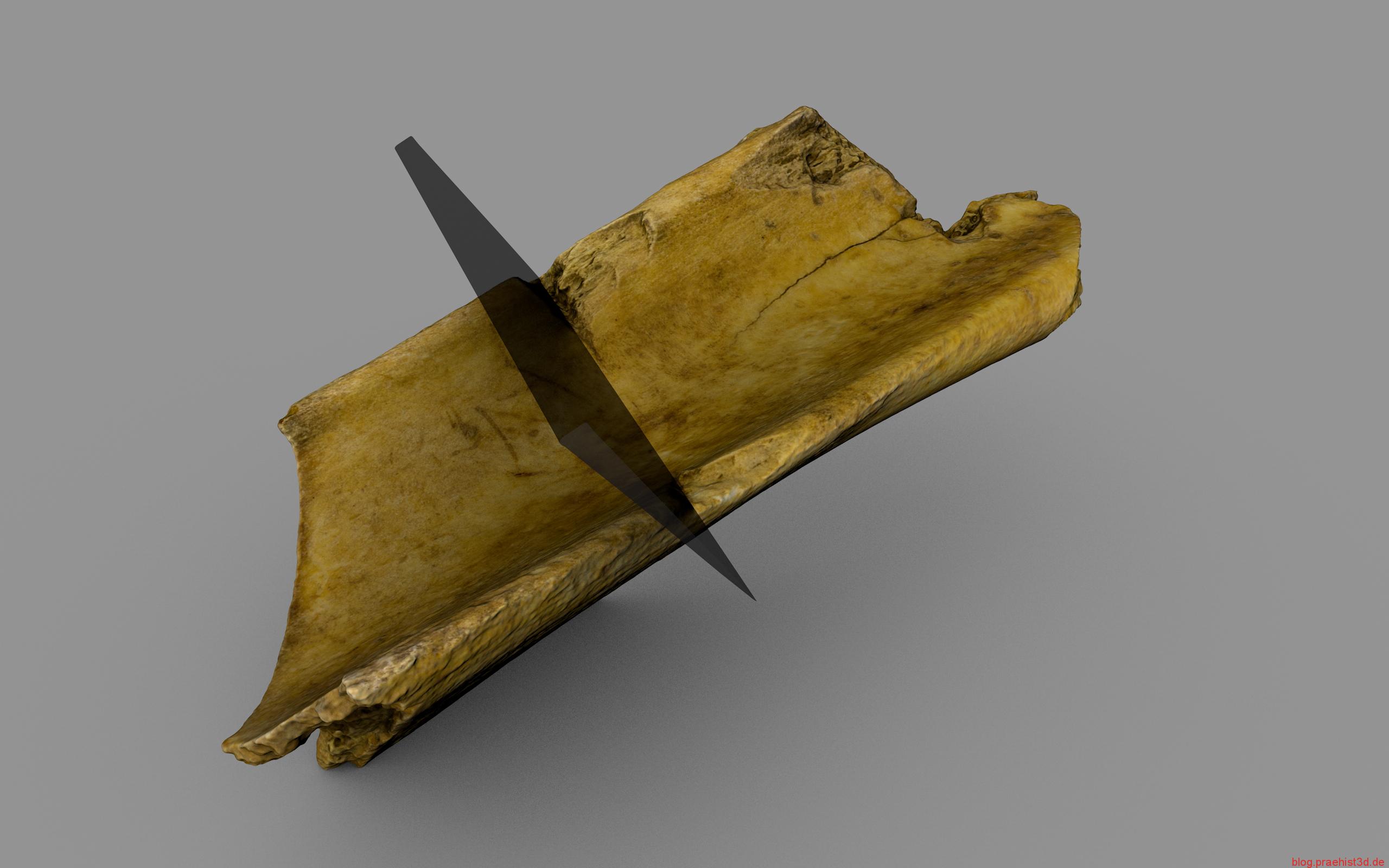

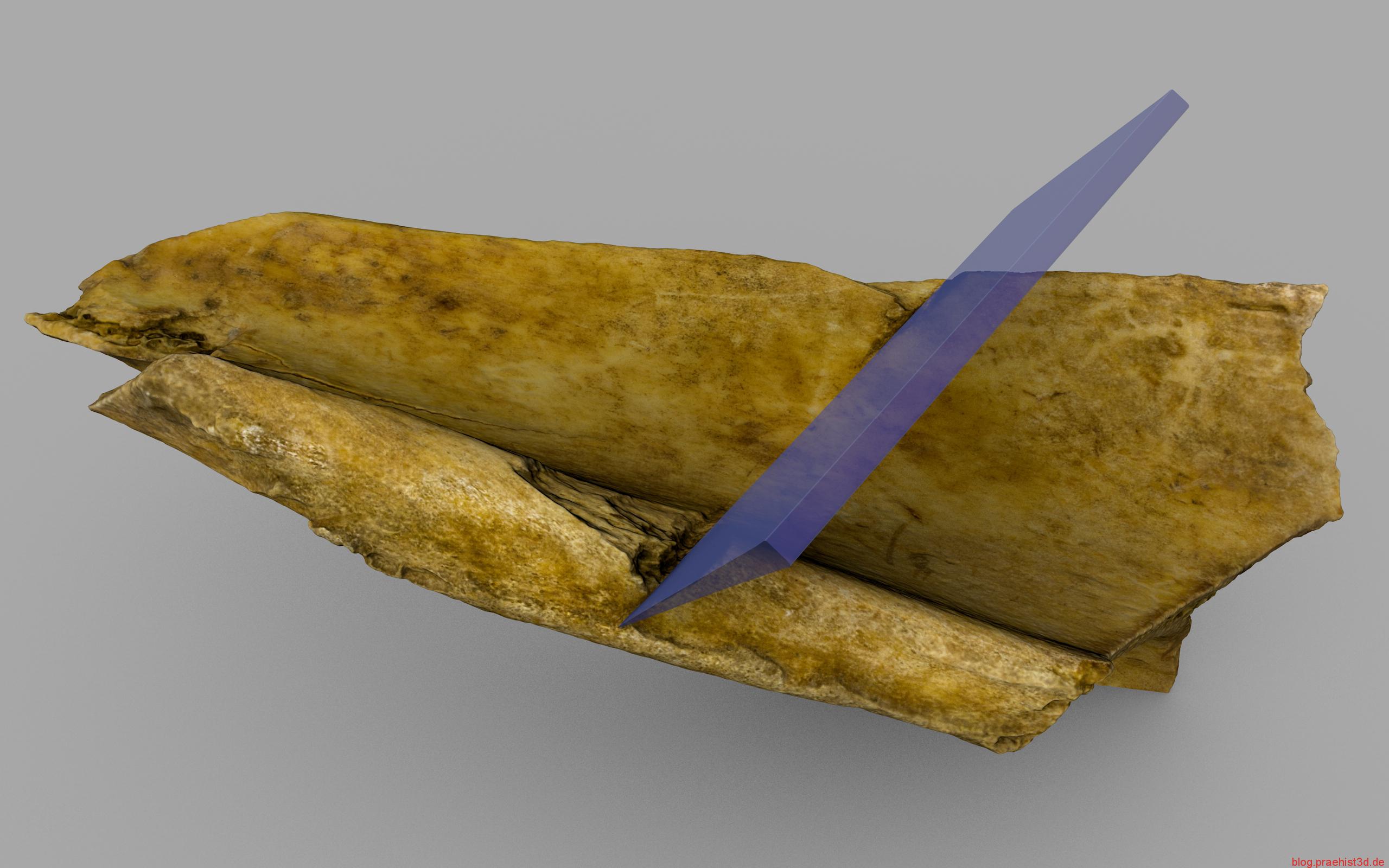
Deutlich ist zu erkennen, dass nur ein einzelner Hieb diese beiden voneinander getrennten Schnittspuren verursacht haben kann. Auch ist offensichtlich, dass entweder vor oder nach diesem „großen“ Hieb mehrere „kleinere“ Hiebe sehr nah bei diesem erfolgten.
Fortsetzung folgt …
So, das war’s bis hierhin. Weitere Bilder und hoffentlich Rückschlüsse kommen, sobald ich folgende Dinge geklärt habe:
- Möglichst genaue Abfolge der weiteren Schnitte und Brüche.
- Die richtige Darstellungsmethode gefunden ist.
- Winkel der Schläge.
- Breite und Form der Klinge.
Über Anregungen, Kritik oder Literatur zu Spuren an Knochen und deren Analyse würde ich mich sehr freuen. Also einfach Kommentar hinterlassen oder mich direkt kontaktieren.
Kontakt aufnehmen:
Haben Sie Interesse an 3D-Scans, Drucken, Rekonstruktionen, Workshops oder Fragen? Dann melden Sie sich!
